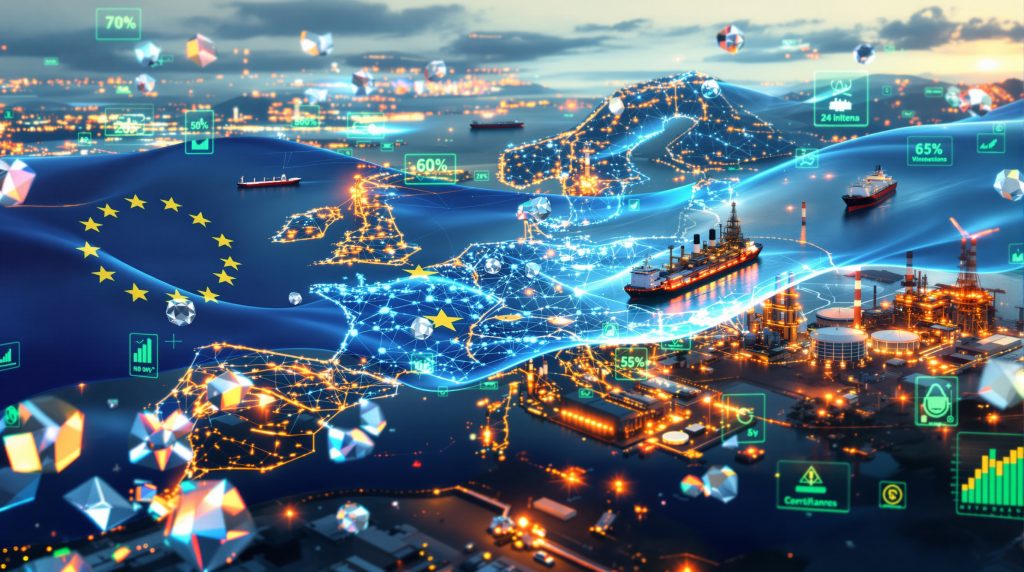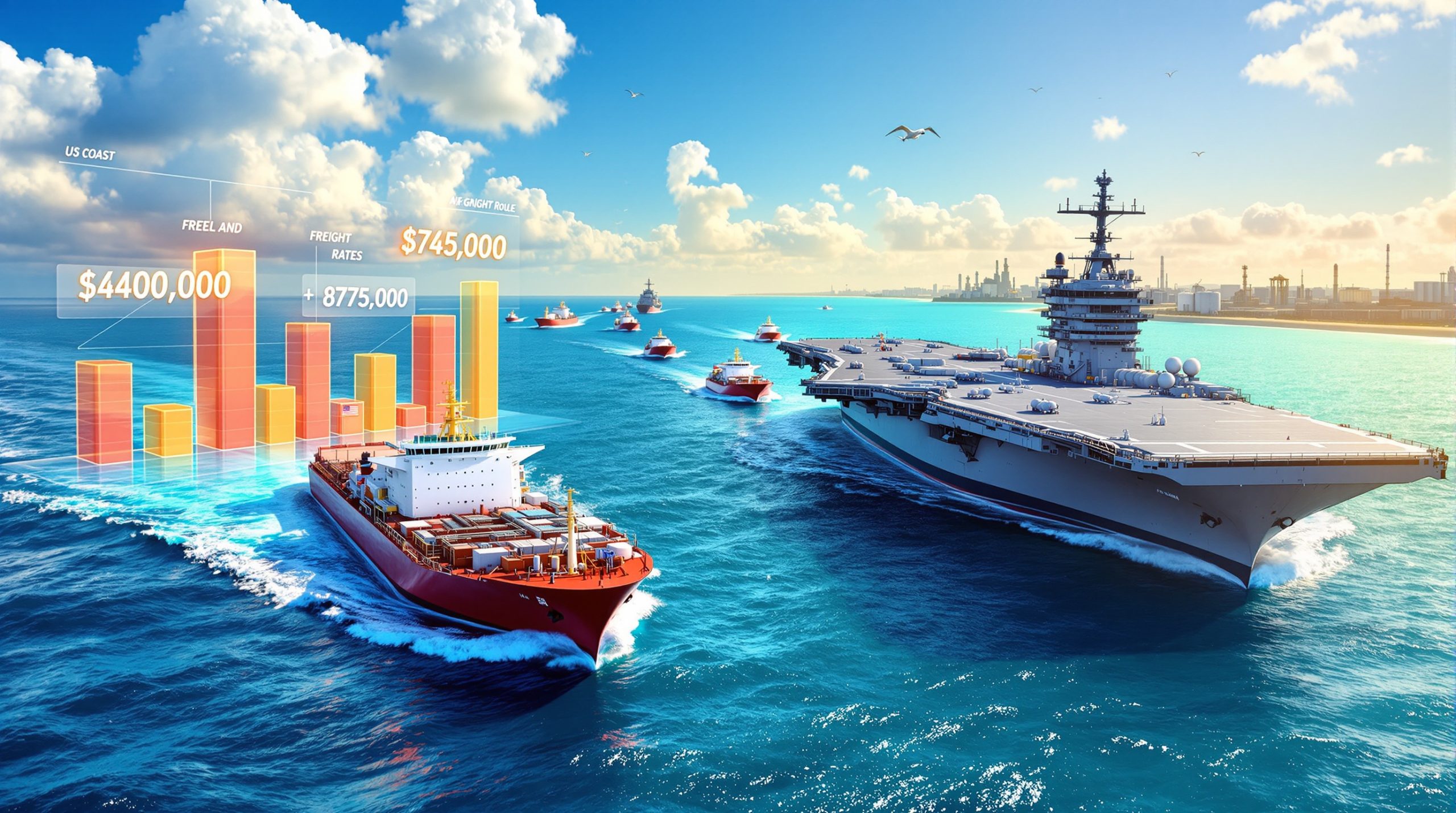Understanding the EU's Methane Emissions Framework
The European Union's EU methane regulation energy security framework represents a fundamental shift in global energy governance, establishing the world's first comprehensive emissions control system for fossil fuel supply chains. This regulatory architecture emerged following Russia's invasion of Ukraine, when Europe faced the stark reality of energy dependency risks while simultaneously pursuing ambitious climate objectives. Furthermore, these new standards intersect with broader critical minerals energy security considerations that shape Europe's strategic energy independence plans.
Implemented on August 4, 2024, the regulation mandates strict measurement, reporting, and verification protocols for methane emissions across all oil, gas, and coal operations serving European markets. The framework creates a binding compliance system where suppliers must demonstrate adherence to EU-equivalent standards regardless of their geographic location.
Starting January 2027, importers face mandatory verification requirements for every fossil fuel cargo entering EU territory. This coincides strategically with Europe's planned elimination of Russian gas imports, creating convergence between supply chain transformation and geopolitical energy independence objectives. By 2030, maximum methane intensity thresholds will establish hard caps on allowable emissions for all imports, effectively creating market exclusion mechanisms for non-compliant suppliers.
Industry data indicates that global methane emissions from oil and gas operations could theoretically supply an additional 180 billion cubic metres of natural gas annually if properly captured. For Europe, which historically imported approximately 300 billion cubic metres of gas yearly, even modest improvements in global supply chain efficiency could significantly enhance available energy resources.
What Are the Core Requirements of EU Methane Standards?
Domestic Operations Compliance
European energy companies face immediate obligations under the regulatory framework. All routine venting and flaring operations became prohibited upon implementation, while comprehensive leak detection and repair programs are now mandatory across extraction, processing, transportation, and storage facilities throughout European energy infrastructure.
The regulation establishes detailed monitoring protocols requiring:
- Real-time emissions tracking systems for all major emission sources
- Quarterly reporting cycles with comprehensive data submission
- Third-party verification processes for all reported emissions data
- Progressive emissions limits for thermal coal mining operations beginning in 2027
Import Verification Standards
The January 2027 milestone introduces unprecedented traceability requirements where importers must verify emissions profiles for fossil fuel molecules entering European markets. This creates technical challenges that industry representatives argue are practically insurmountable under current market structures.
According to Andreas Guth, Secretary-General of Eurogas, industry stakeholders have raised concerns about implementation feasibility since the regulation's inception. Eurogas membership includes supermajors Shell, TotalEnergies, and BP, which collectively represent some of the world's largest LNG trading operations.
The verification framework demands that importers demonstrate suppliers operate under monitoring systems equivalent to EU domestic standards. For American LNG exports, this means proving thousands of independent producers across multiple production basins comply with EU requirements. A single LNG cargo may contain gas from hundreds of wells across different states, making molecular-level attribution extremely complex.
Maximum methane intensity thresholds taking effect in 2030 will establish binding emissions caps for all imports. Non-compliant suppliers face potential market exclusion or significant compliance fees, creating economic incentives for global operational improvements while potentially reducing European supply availability during transition periods.
How Does Methane Regulation Strengthen Energy Security?
Reducing Supply Chain Waste
Methane emissions represent direct energy losses throughout supply chains, creating dual impacts: reduced energy availability and atmospheric pollution. When natural gas escapes into the atmosphere rather than reaching end consumers, it simultaneously undermines supply security and climate objectives. In addition, the European Union's methane regulation demonstrates comprehensive policy frameworks for addressing these challenges.
The regulation addresses this inefficiency by capturing previously wasted resources. Global potential for recoverable methane from existing operations suggests substantial untapped energy supplies that could enhance European import availability without requiring new production capacity or infrastructure development.
Diversification Through Standards
The EU methane regulation energy security framework accelerates Europe's strategic pivot away from Russian energy dependence by establishing quality-based supplier differentiation. Rather than competing solely on price or volume availability, suppliers must now demonstrate superior operational efficiency and environmental performance.
This approach theoretically expands the pool of qualified exporters while reducing dependence on any single source. Major LNG suppliers including the United States, Qatar, and Australia are adapting operations to maintain European market access, creating competitive dynamics around previously invisible operational metrics. Moreover, these developments align with broader renewable energy innovations transforming global energy markets.
The regulatory timeline aligns strategically with planned Russian gas elimination. The 2027 verification requirements coincide with Europe's targeted independence from Russian energy, using emissions standards as a supply diversification mechanism rather than simple supply restriction.
American LNG exporters, including Cheniere Energy and Venture Global LNG, have announced voluntary methane monitoring programmes to maintain European market access. The U.S. Energy Department established certification programmes helping domestic producers demonstrate compliance, effectively transforming regulatory frameworks into market-access infrastructure.
Qatar faces significant pressure to align operations with EU requirements given its position as the world's largest LNG exporter. The country has invested heavily in methane detection technology, particularly satellite-based monitoring systems, to maintain its substantial European market share while demonstrating compliance capability.
Why Do Energy Companies Oppose These Requirements?
Implementation Complexity Concerns
Energy companies argue that verifying methane emissions across complex global supply chains presents technically insurmountable challenges. The fundamental barrier centres on commodity market structure, where natural gas becomes fungible once combined in processing facilities.
Key Industry Concerns:
| Challenge | Description | Potential Impact |
|---|---|---|
| Molecular Tracing | Inability to track specific molecules through fungible commodity markets | Compliance uncertainty |
| Verification Costs | Expensive monitoring and third-party verification systems | Increased consumer prices |
| Market Fragmentation | Conflicting standards across global jurisdictions | Supply chain disruptions |
| Timeline Pressure | Limited implementation period for comprehensive changes | Potential supply shortages |
Eurogas and five additional industry associations raised formal concerns about the tracing issue, arguing that proposed solutions may not adequately consider current market structures. They contend that compliance requirements are unlikely to be implementable without considerable cost and market disruption.
Competitive Disadvantage Arguments
Industry representatives argue that EU-specific requirements create unfair competitive pressures compared to other global markets with less stringent standards. This could incentivise suppliers to redirect cargoes toward markets with fewer regulatory barriers, potentially reducing European supply availability. Furthermore, these concerns intersect with broader trade war market impacts affecting global energy commerce.
ExxonMobil CEO Darren Woods characterised the broader EU sustainability framework as potentially forcing complete European market exit. Woods expressed concerns about extraterritorial application of European regulations, stating that compliance becomes impossible when EU legislation attempts enforcement across global business operations.
The company's leadership has characterised related directives as harmful legislation that undermines business viability in European markets. This represents direct opposition from one of the world's largest energy companies to EU regulatory approaches.
U.S. Energy Secretary Chris Wright and Qatari Energy Minister Saad Sherida Al-Kaabi jointly warned the EU that regulations pose significant risks to energy supply affordability and reliability. Their coordinated position suggests aligned concern among major suppliers about regulatory framework impacts on global LNG market stability.
The joint statement characterised the regulations as posing existential threats to EU industrial economy growth, competitiveness, and resilience, indicating supplier willingness to leverage geopolitical relationships in regulatory opposition.
What Are the Economic Implications for European Energy Markets?
Short-Term Cost Pressures
Implementation requires significant upfront investments in monitoring technology, reporting systems, and supply chain modifications. These costs will likely translate into higher energy prices during initial transition periods, particularly affecting industrial users with substantial energy consumption. Additionally, these impacts may influence US natural gas forecasts as global market dynamics shift.
European gas importers may face premium pricing for compliant supplies, especially during the 2027-2030 transition period when compliant capacity remains limited. Industry estimates suggest compliance costs could potentially increase LNG prices by 15-25%, though specific impacts vary significantly by supplier and implementation approach.
The U.S. National Association of Manufacturers characterised related directives as costly red tape with capacity to undermine manufacturing competitiveness, suggesting broader economic concerns beyond energy sector impacts.
Long-Term Market Benefits
Proponents argue that methane regulation creates sustainable competitive advantages for European energy markets. By driving global improvements in supply chain efficiency, the framework could reduce overall energy waste and stabilise long-term pricing through enhanced operational performance.
The regulation positions Europe as a leader in clean energy standards, potentially attracting investment in advanced energy technologies while creating export opportunities for European environmental technology companies. This could generate economic benefits that offset implementation costs over longer time horizons. However, implementing such frameworks requires coordination with broader methane protection efforts across multiple regulatory jurisdictions.
Improved supply chain efficiency translates directly into increased energy availability. Gas currently lost through leakage becomes available for consumption, effectively expanding supply without requiring additional production capacity or infrastructure investment.
How Do Global Suppliers Respond to EU Requirements?
United States Adaptation Strategies
American LNG exporters face complex compliance challenges given the fragmented nature of U.S. gas production. Gas reaching export facilities combines supply from thousands of wells across multiple production basins, each with distinct emissions profiles and operational characteristics.
The U.S. Energy Department established voluntary certification programmes helping domestic producers demonstrate compliance with EU standards. However, U.S. officials have expressed concerns about extraterritorial regulatory reach and potential impacts on American energy sovereignty.
Energy Secretary Chris Wright warned that the regulations could undermine trans-Atlantic energy cooperation, suggesting tensions between climate objectives and geopolitical energy relationships. This reflects broader concerns about regulatory frameworks affecting international trade relationships. Consequently, these challenges align with wider industry innovation trends reshaping global energy markets.
Qatar's Market Position
As the world's largest LNG exporter, Qatar faces substantial pressure to align operations with EU requirements while maintaining competitive positioning in global markets. The country's integrated operations from production through export create different compliance challenges compared to the fragmented U.S. market structure.
Qatar has invested heavily in methane detection technology, including satellite-based monitoring systems, to verify and reduce operational emissions. However, Qatari officials emphasise their commitment to environmental stewardship while arguing for more flexible implementation timelines.
The joint position taken with U.S. officials suggests coordinated supplier concern about regulatory impacts on global LNG market stability. This coordination indicates potential for collective supplier pressure on EU regulatory approaches.
What Alternative Approaches Could Balance Climate and Security Goals?
Phased Implementation Models
Rather than uniform 2027 implementation across all suppliers, critics suggest graduated timelines based on supplier capacity and technical feasibility. This approach could maintain supply diversity while allowing comprehensive compliance system development.
Potential Phased Approach:
- 2027-2029: Voluntary compliance with economic incentives for early adoption
- 2029-2031: Mandatory standards for major suppliers above defined thresholds
- 2031+: Universal application across all imports regardless of size
This graduated timeline could reduce supply disruption risks while maintaining regulatory pressure for emissions improvements. It would also provide additional time for technology development and market structure adaptation.
Technology-Based Solutions
Advanced satellite monitoring systems like MethaneSAT offer potential pathways for independent verification of supplier compliance without requiring complex molecular tracing. These technologies could provide transparent, tamper-proof verification of regional emissions performance.
Blockchain-based certification systems could create transparent supply chain emissions records, addressing industry concerns about verification complexity while maintaining regulatory oversight. Such systems could provide real-time tracking without requiring molecular-level attribution.
Regional emissions factors based on production basin characteristics could provide compliance frameworks that acknowledge market realities while driving operational improvements. This approach would incentivise basin-wide efficiency improvements rather than individual well tracking.
How Does This Regulation Compare to Global Climate Policies?
International Precedent Setting
The EU methane regulation energy security framework establishes the first mandatory international emissions standards for fossil fuel imports. This precedent could influence similar policies in other major energy-importing regions, creating global momentum toward supply chain decarbonisation.
Other jurisdictions including Canada, Japan, and South Korea are monitoring EU implementation results as they develop their own methane reduction strategies. Success could accelerate global adoption of similar frameworks, while implementation difficulties could discourage regulatory replication.
Integration with Climate Frameworks
The regulation aligns with international commitments under the Global Methane Pledge, which targets 30% methane emissions reductions by 2030. By creating enforceable standards, the EU transforms voluntary international commitments into binding commercial requirements.
This approach demonstrates how trade policy can advance climate objectives while maintaining energy security priorities through market-based mechanisms rather than supply restrictions. It represents an innovative policy tool for climate action through economic incentives.
The framework could establish Europe as the global standard-setter for clean energy imports, creating competitive advantages for compliant suppliers while potentially reshaping global energy markets around environmental performance criteria.
What Does the Future Hold for EU Energy Security?
2027 Implementation Timeline
The critical test for EU methane regulation arrives in January 2027, when import verification requirements take full effect. This timing creates convergence between supply chain transformation and Russian gas elimination, representing a high-stakes transition period for European energy security.
European officials express confidence that global suppliers will adapt to maintain market access, viewing regulatory compliance as a competitive necessity rather than optional enhancement. However, industry representatives warn of potential supply disruptions if technical challenges remain unresolved.
The success or failure of smooth implementation will significantly influence broader EU climate policy credibility and international regulatory replication. Poor execution could undermine both energy security and climate objectives simultaneously.
Long-Term Strategic Implications
Successful implementation could establish Europe as the global leader in clean energy import standards, creating sustainable competitive advantages while advancing both climate and security objectives. This would demonstrate the viability of using trade policy for environmental goals without compromising energy access.
However, implementation failures could provide ammunition for critics of climate-focused energy policies, potentially affecting broader EU climate ambitions and international cooperation frameworks. The regulation represents a high-stakes experiment in simultaneous climate and security policy advancement.
The framework's extraterritorial reach creates precedent for trade-based environmental regulation that extends far beyond European borders, potentially reshaping global energy markets around emissions performance rather than traditional cost and availability factors.
Disclaimer: This analysis involves forecasts and speculation about future regulatory outcomes and market dynamics. The actual implementation and impacts of EU methane regulation may differ significantly from current projections. Energy market conditions and regulatory frameworks continue evolving, and readers should consult current official sources for the most up-to-date information on compliance requirements and market impacts.
Looking to Capitalise on Energy Market Transitions?
Discovery Alert's proprietary Discovery IQ model delivers real-time alerts on significant mineral discoveries across the energy transition sector, instantly empowering subscribers to identify actionable opportunities ahead of the broader market. Explore how major mineral discoveries can drive exceptional returns and begin your 30-day free trial today to secure your market-leading advantage.




